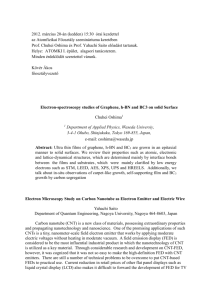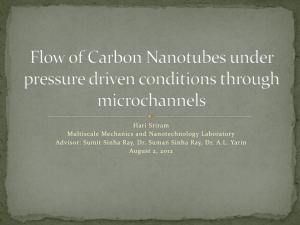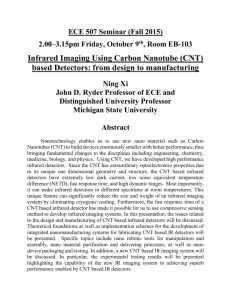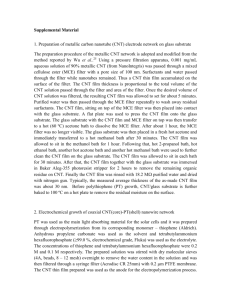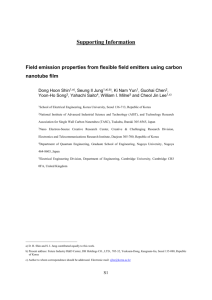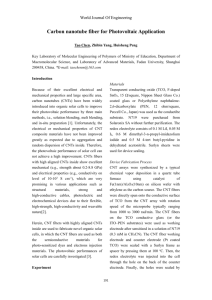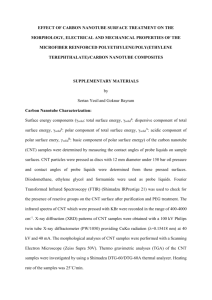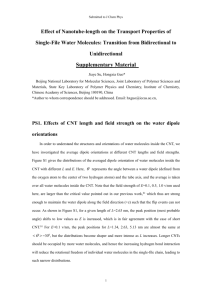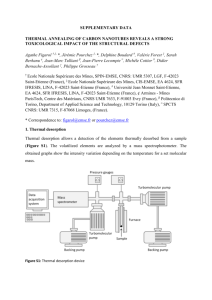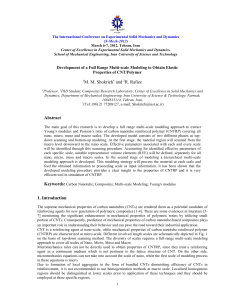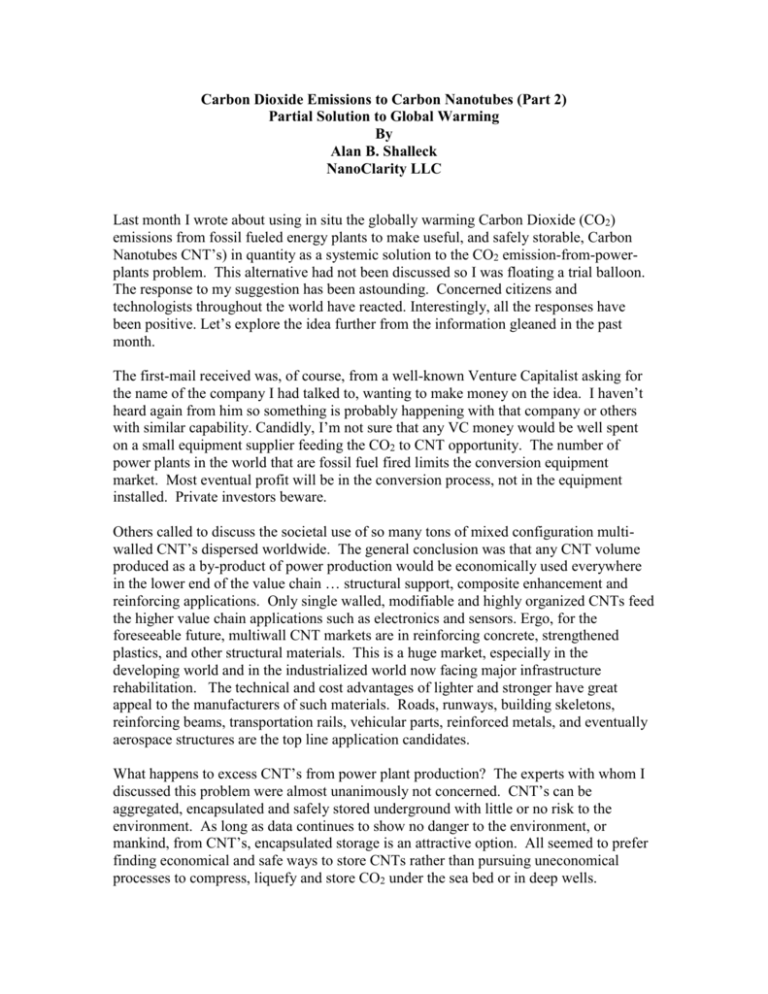
Carbon Dioxide Emissions to Carbon Nanotubes (Part 2)
Partial Solution to Global Warming
By
Alan B. Shalleck
NanoClarity LLC
Last month I wrote about using in situ the globally warming Carbon Dioxide (CO2)
emissions from fossil fueled energy plants to make useful, and safely storable, Carbon
Nanotubes CNT’s) in quantity as a systemic solution to the CO2 emission-from-powerplants problem. This alternative had not been discussed so I was floating a trial balloon.
The response to my suggestion has been astounding. Concerned citizens and
technologists throughout the world have reacted. Interestingly, all the responses have
been positive. Let’s explore the idea further from the information gleaned in the past
month.
The first-mail received was, of course, from a well-known Venture Capitalist asking for
the name of the company I had talked to, wanting to make money on the idea. I haven’t
heard again from him so something is probably happening with that company or others
with similar capability. Candidly, I’m not sure that any VC money would be well spent
on a small equipment supplier feeding the CO2 to CNT opportunity. The number of
power plants in the world that are fossil fuel fired limits the conversion equipment
market. Most eventual profit will be in the conversion process, not in the equipment
installed. Private investors beware.
Others called to discuss the societal use of so many tons of mixed configuration multiwalled CNT’s dispersed worldwide. The general conclusion was that any CNT volume
produced as a by-product of power production would be economically used everywhere
in the lower end of the value chain … structural support, composite enhancement and
reinforcing applications. Only single walled, modifiable and highly organized CNTs feed
the higher value chain applications such as electronics and sensors. Ergo, for the
foreseeable future, multiwall CNT markets are in reinforcing concrete, strengthened
plastics, and other structural materials. This is a huge market, especially in the
developing world and in the industrialized world now facing major infrastructure
rehabilitation. The technical and cost advantages of lighter and stronger have great
appeal to the manufacturers of such materials. Roads, runways, building skeletons,
reinforcing beams, transportation rails, vehicular parts, reinforced metals, and eventually
aerospace structures are the top line application candidates.
What happens to excess CNT’s from power plant production? The experts with whom I
discussed this problem were almost unanimously not concerned. CNT’s can be
aggregated, encapsulated and safely stored underground with little or no risk to the
environment. As long as data continues to show no danger to the environment, or
mankind, from CNT’s, encapsulated storage is an attractive option. All seemed to prefer
finding economical and safe ways to store CNTs rather than pursuing uneconomical
processes to compress, liquefy and store CO2 under the sea bed or in deep wells.
The consensus also predicted that the eventual reduction of CO2 emissions from CNT
production would be substantial … just under 55% of the total CO2 power plant related
emission output. One estimate was considerably higher. Two groups modeled a
worldwide equipment installation program in known and planned fossil fuel fired power
plants, estimated the time dependent curve of emission reduction for different power
plant designs and the results were similar. In other words, if undertaken and supported
economically, the proposed program would make a substantial dent in the overall
greenhouse gas emission problem, especially in China and the US.
I also discussed the technical details of conversion of CO2 into CNT with experts. At the
recent Livingston Nano-Conference in NYC, I talked to three of the more experienced
manufacturers of CNTs. They called my suggestion “re-carbonization” and, after much
talk, were unable to discredit the proposal technologically. Their only caveat was provided the negative energy required to create the tubes is supported economically or
subsidized.
The percentage of energy per megawatt output required to be bled off a plant's output to
power the re-carbonization process turns out to be very low. One conceptualized process
used only 0.4% of the output of a normalized power plant to power the entire process.
This is clearly a cost that is absorbable or subsidizable. Granting tax credits for
installation of CO2 re-carbonization machinery would most likely sail through Congress
and be signed by a President from either party.
Where best to filter the CO2 from the gas stream seems also to have an easy and optimal
location. Many of the newer power plants gasify their fossil fuel prior to combustion
chamber ignition. It was the technical consensus that tapping the gasified fuel stock was
the location within the energy generation process stream where it would be easiest and
most efficient to filter out the CO2 from the rest of the gas flow. It would be more
difficult to attempt separation within the output exhaust flow for temperature, scrubber
and exhaust gas flow reasons. Employable separation processes exist and are adaptable.
In sum, a little investigation proves the suggestion of converting excess emission CO2 in
fossil fueled energy power plants into CNT’s and, either employing them economically,
or storing them in reasonably accessible safe locations, is a viable and meritorious
suggestion to help reduce global warming over the next century.
Alan B. Shalleck
NanoClarity LLC
www.nanoclarity.com
alan@nanoclarity.com
© 2006 –NanoClarity LLC- all rights reserved.




